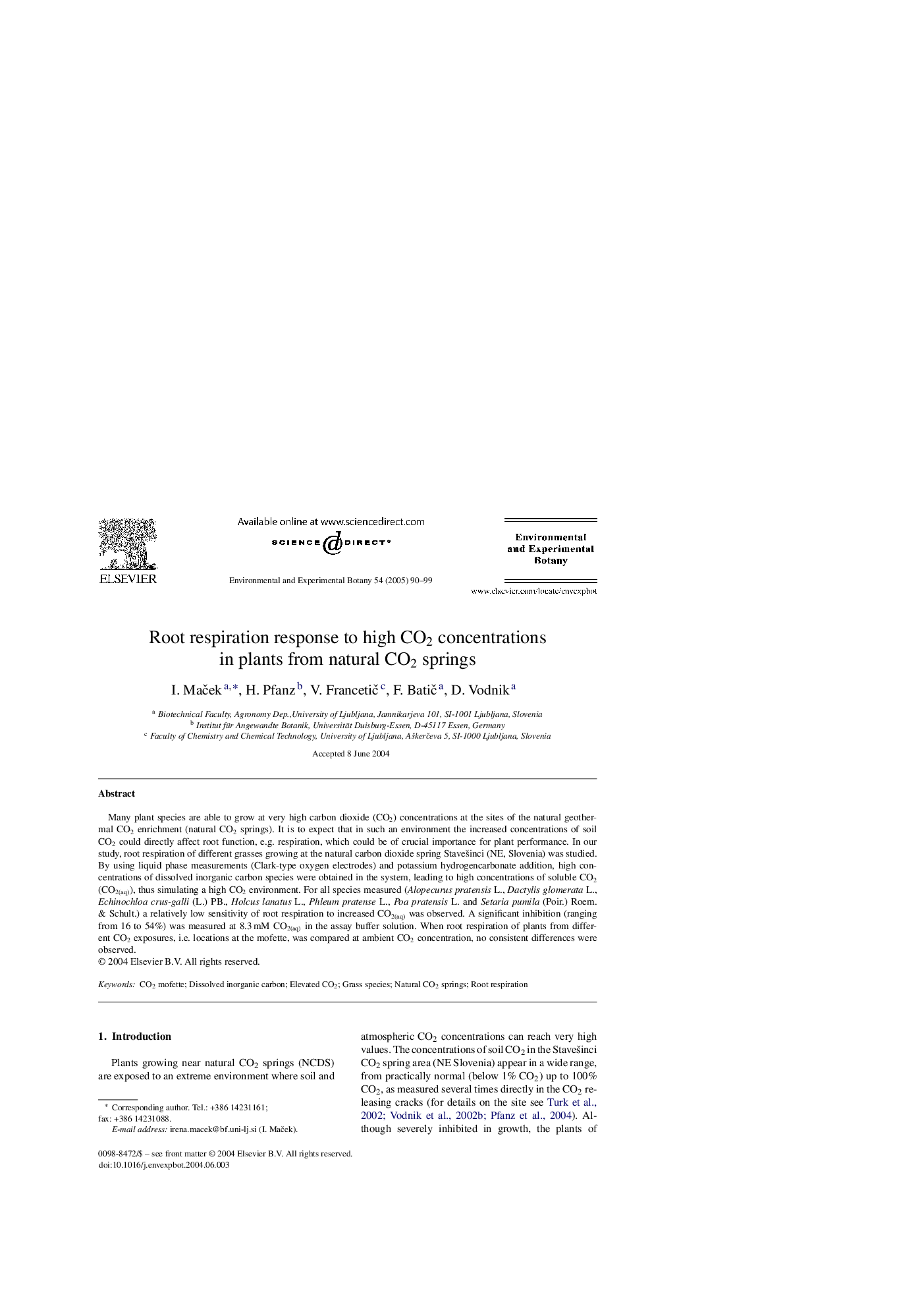| Article ID | Journal | Published Year | Pages | File Type |
|---|---|---|---|---|
| 9485719 | Environmental and Experimental Botany | 2005 | 10 Pages |
Abstract
Many plant species are able to grow at very high carbon dioxide (CO2) concentrations at the sites of the natural geothermal CO2 enrichment (natural CO2 springs). It is to expect that in such an environment the increased concentrations of soil CO2 could directly affect root function, e.g. respiration, which could be of crucial importance for plant performance. In our study, root respiration of different grasses growing at the natural carbon dioxide spring Stavešinci (NE, Slovenia) was studied. By using liquid phase measurements (Clark-type oxygen electrodes) and potassium hydrogencarbonate addition, high concentrations of dissolved inorganic carbon species were obtained in the system, leading to high concentrations of soluble CO2 (CO2(aq)), thus simulating a high CO2 environment. For all species measured (Alopecurus pratensis L., Dactylis glomerata L., Echinochloa crus-galli (L.) PB., Holcus lanatus L., Phleum pratense L., Poa pratensis L. and Setaria pumila (Poir.) Roem. & Schult.) a relatively low sensitivity of root respiration to increased CO2(aq) was observed. A significant inhibition (ranging from 16 to 54%) was measured at 8.3 mM CO2(aq) in the assay buffer solution. When root respiration of plants from different CO2 exposures, i.e. locations at the mofette, was compared at ambient CO2 concentration, no consistent differences were observed.
Related Topics
Life Sciences
Agricultural and Biological Sciences
Ecology, Evolution, Behavior and Systematics
Authors
I. MaÄek, H. Pfanz, V. FrancetiÄ, F. BatiÄ, D. Vodnik,
